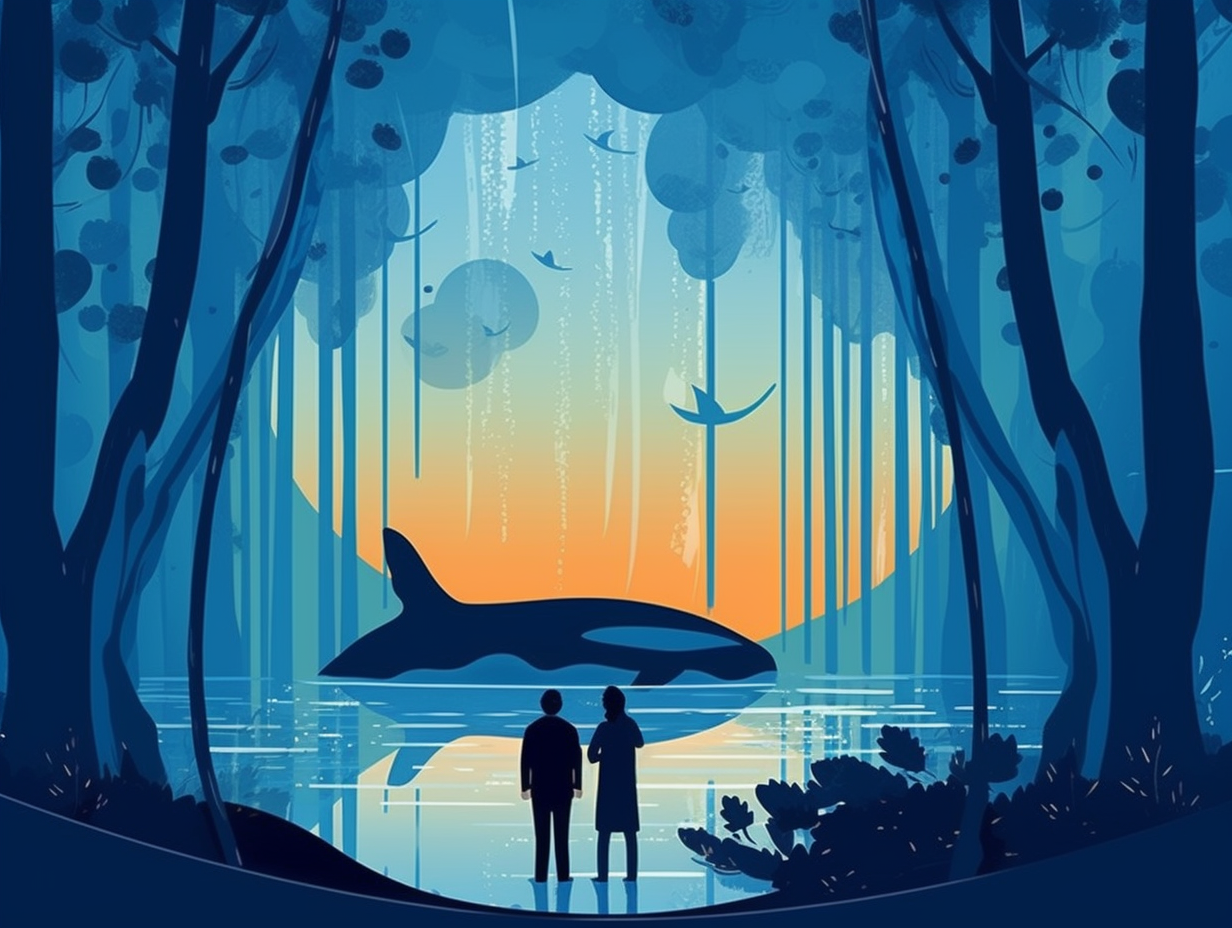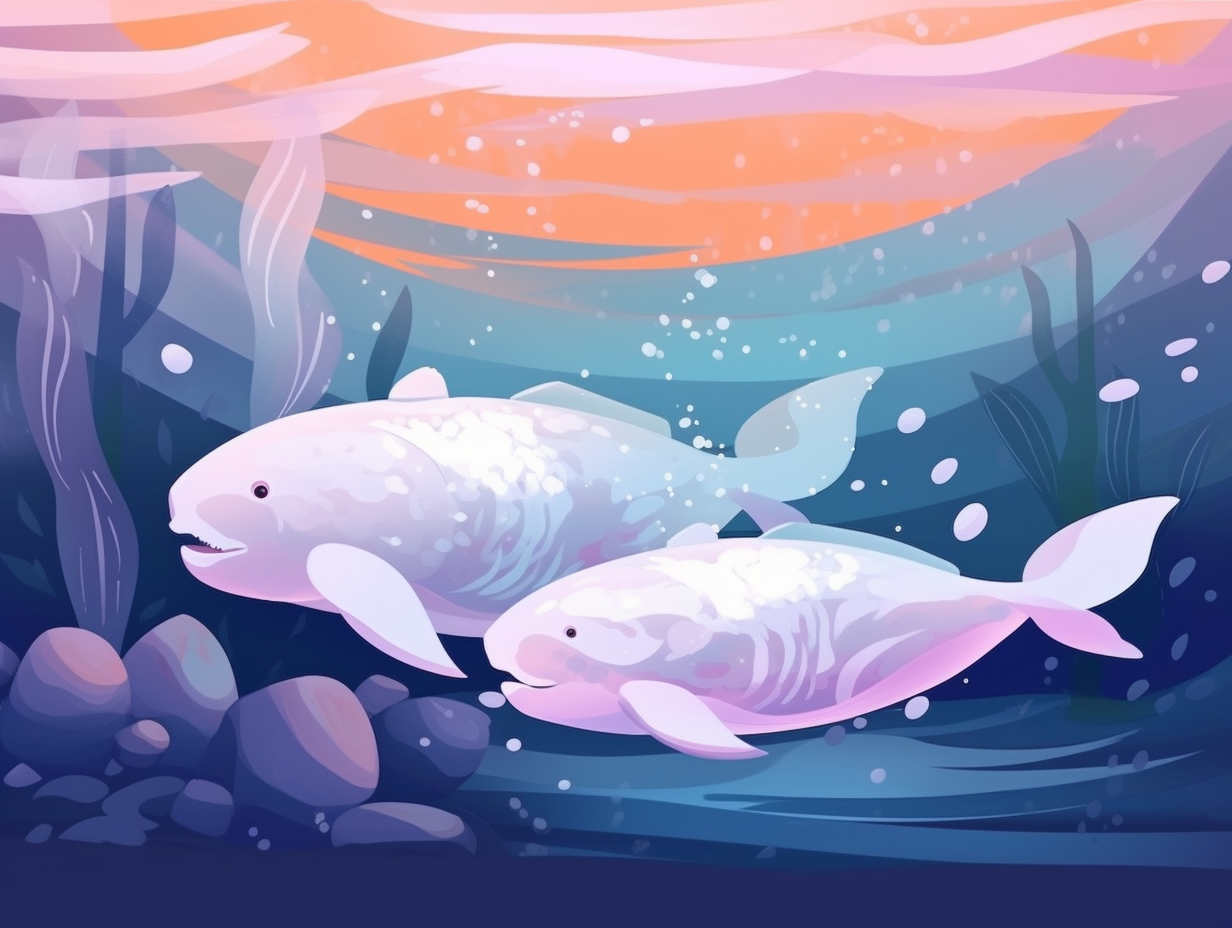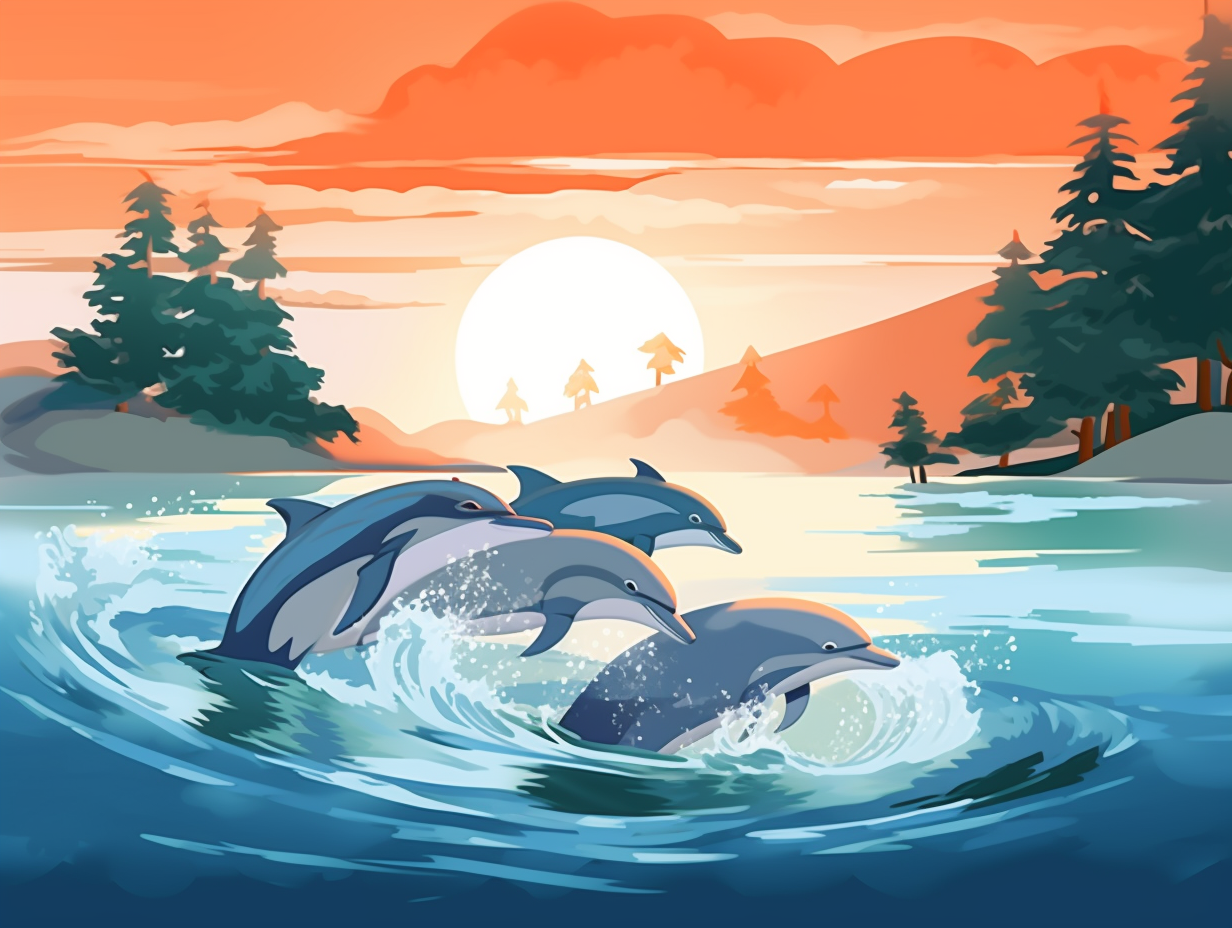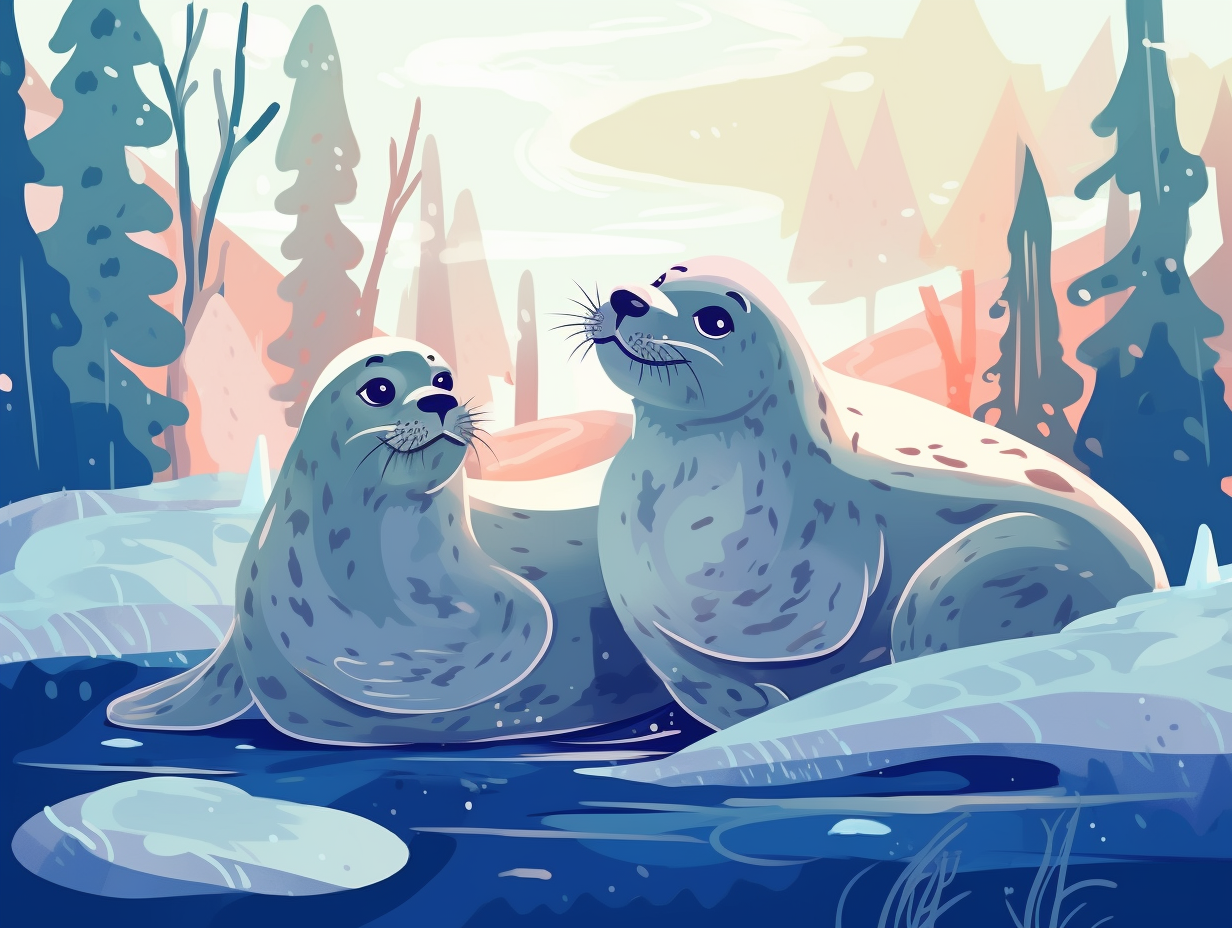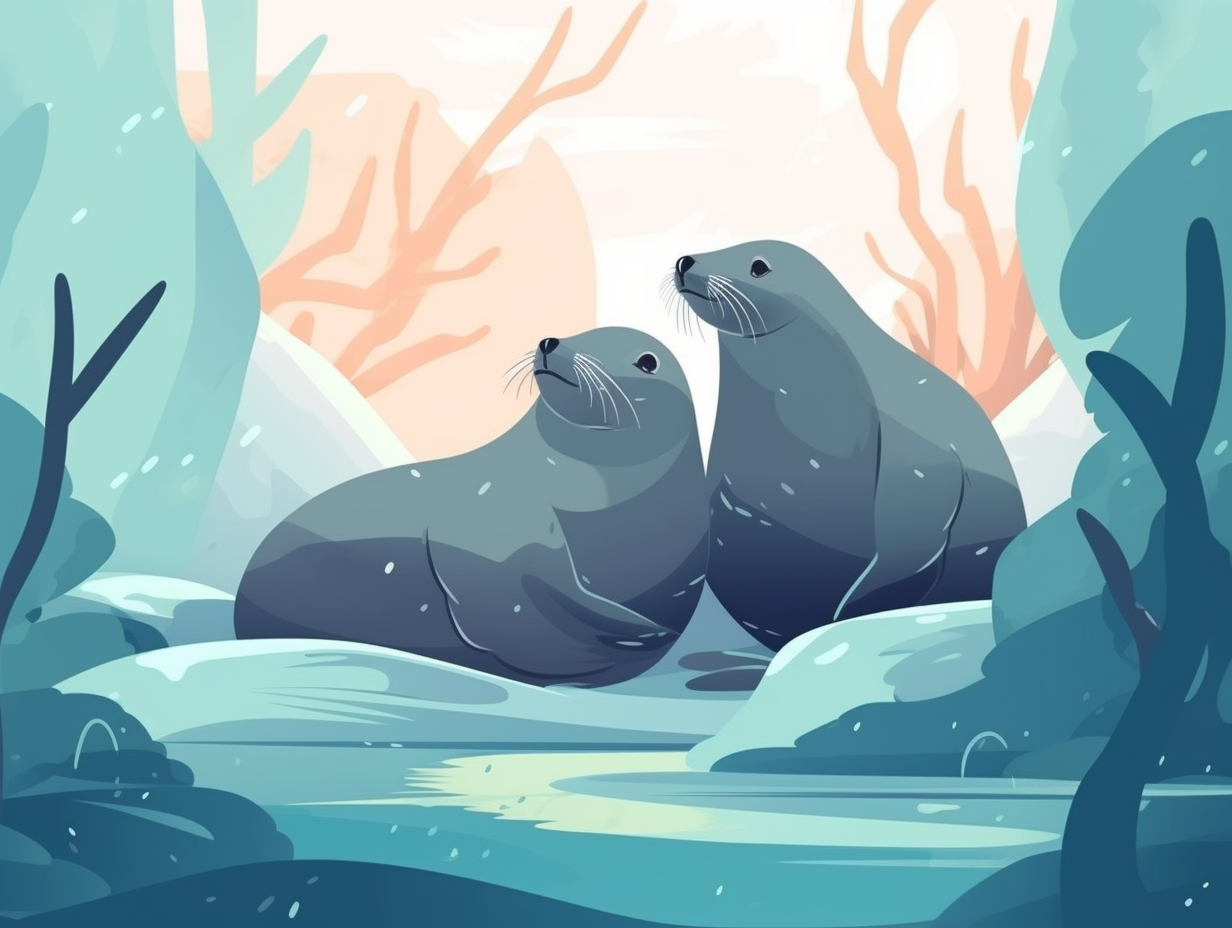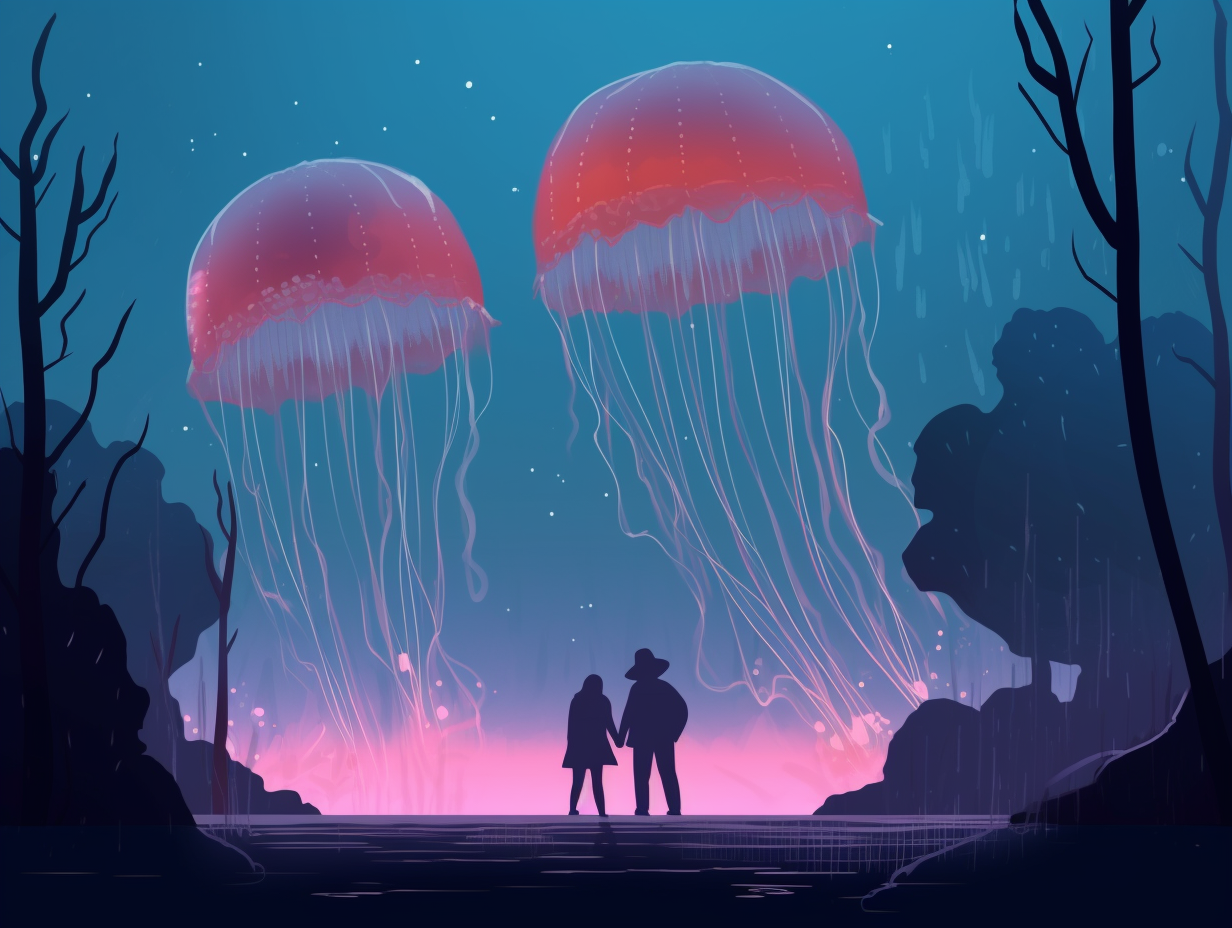Discover the Ocean's Majestic Giants: Top 25 Fun and Fascinating Facts About Orcas!

1. Orcas' Unexpected Delicacies
Whoever said "you are what you eat" clearly wasn't aware of the orca's culinary adventures: these killer whales have a diverse diet that includes not only the usual marine suspects like seals and sea lions but also unexpected delicacies such as birds and even water-bound moose.
Source => nwf.org
2. Trendsetting Hunting Techniques
If orca whales were on social media, they'd surely be the talk of the town with their trendsetting hunting techniques and multi-generational wisdom: Orcas use fascinating strategies like the "Wave Wash" for seal eviction from ice floes, and "Carousel Feeding" as an underwater fish flash mob, demonstrating their high intelligence and social nature!
Source => pbs.org

Did you know dolphins sleep with only half their brain? Discover this unique slumber technique and its purpose in our fun facts!
=> Fun Facts about Dolphins
3. Orcas' Family High School Cliques
If orcas attended high school, they'd definitely fit in with the cool, tight-knit clique wearing matching family jackets – with a flair for synchronized swimming meets and impromptu water acrobatics: Orcas travel in social pods of up to 30 family members, with females rooted in their lifelong squad, while males float between various groups, and engage in playful behavior such as racing and breaching, which may be their way of chatting within their posse.
Source => ypte.org.uk
4. Orcas' Complex Language Inheritance
Move over, Rosetta Stone: Orcas have been rocking the language lessons since the prehistoric chapter! These aquatic polyglots have a uniquely complex dialect that's inherited in the womb, with each pod flaunting distinct lexical collections for flawless communication and an ever-so-classy society below the waves.
Source => wildorca.org
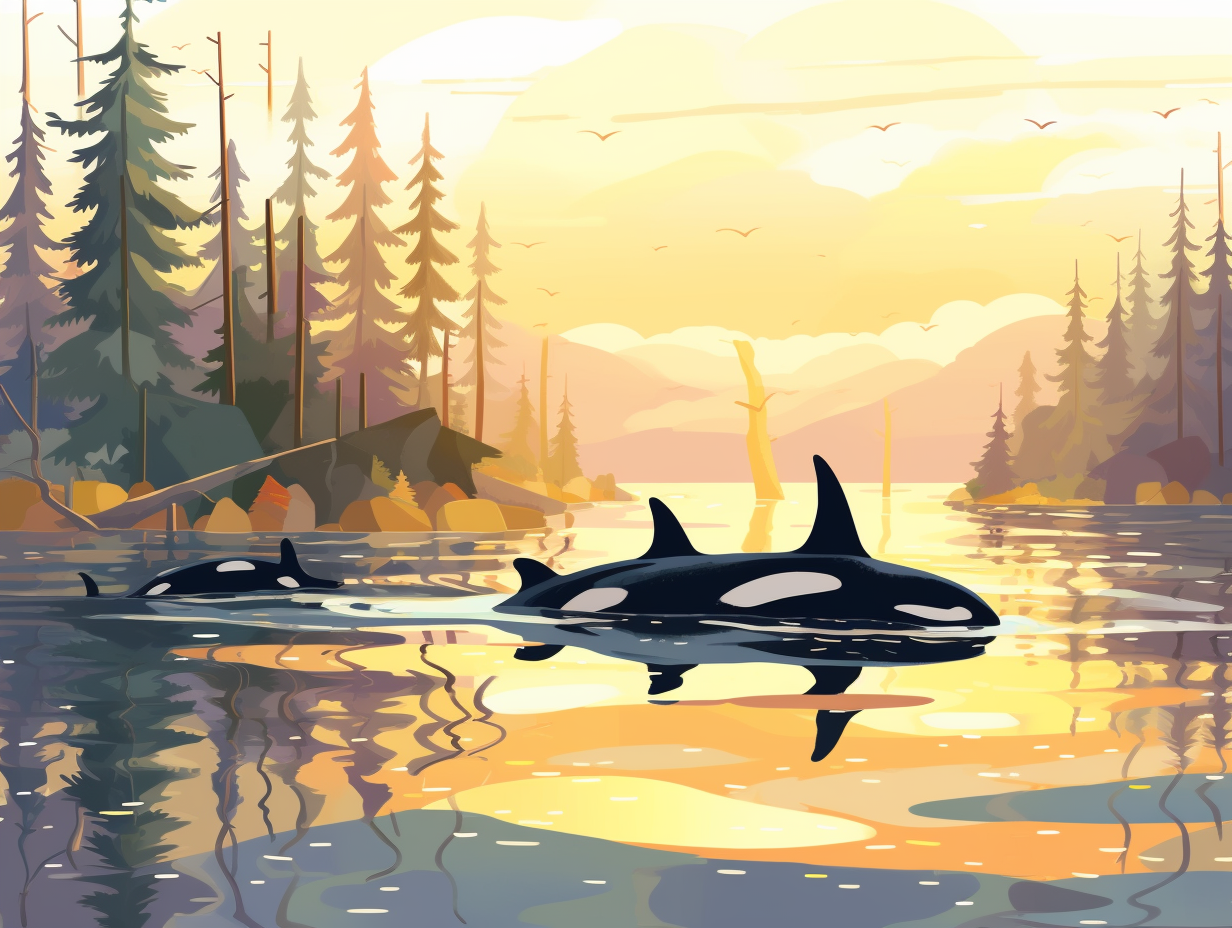
5. Orcas: Turbo-charged Torpedoes
Orcas, or as we like to call them "the turbo-charged black and white torpedoes of the ocean", are notorious for their need for speed: Their aquatic prowess enables them to zip through the ocean at breakneck speeds of up to 45 kilometers per hour (28 mph), impressively maintaining these velocities for extended distances.
Source => historic-cornwall.org.uk
6. Sealball: A Splashy Hunting Tactic
Playing "sealball" with a splashy twist: Orcas have been known to give seals the ultimate waterpark ride by launching them into the air with their tail fins as a hunting tactic, not for sport, but to debilitate and stun their prey before going in for the grand finale – a motherly lesson that's teaching orca calves the art of seal-catching.
Source => newsweek.com
7. Orcas' Secret Family Language
When orcas play the game of "telephone," they take it very seriously: Killer whales have unique sets of calls in the eastern North Pacific that they use to communicate and bond with their podmates, essentially forming a close-knit family with their own secret language.
Source => fisheries.noaa.gov
8. Sacrificial Mama Orcas
Whoever said "mama's boy" is a bad thing must've never met orcas: Female orcas often give their all for their sons, sometimes even sacrificing their chances of having more offspring, just to ensure their sons survive and thrive. Orcas have complex family and social structures, with males relying on their mothers throughout their lives, while females venture out and hunt independently. However, these unique dynamics are also fragile, as seen in the threatened Southern Resident orca population, which now stands at a mere 73 members — a cause of concern for scientists working to conserve their kind.
Source => bbc.com
9. Mannerly Orcas with Accents
In a world where good manners are a whale of a time: Orcas form lifetime pods of 6-40 members, protect their young, sick, and injured, and even display unique regional "accents" in their clicks, whistles and scream-like vocalizations used for communication, mating, and locating prey.
Source => westfield.ma.edu
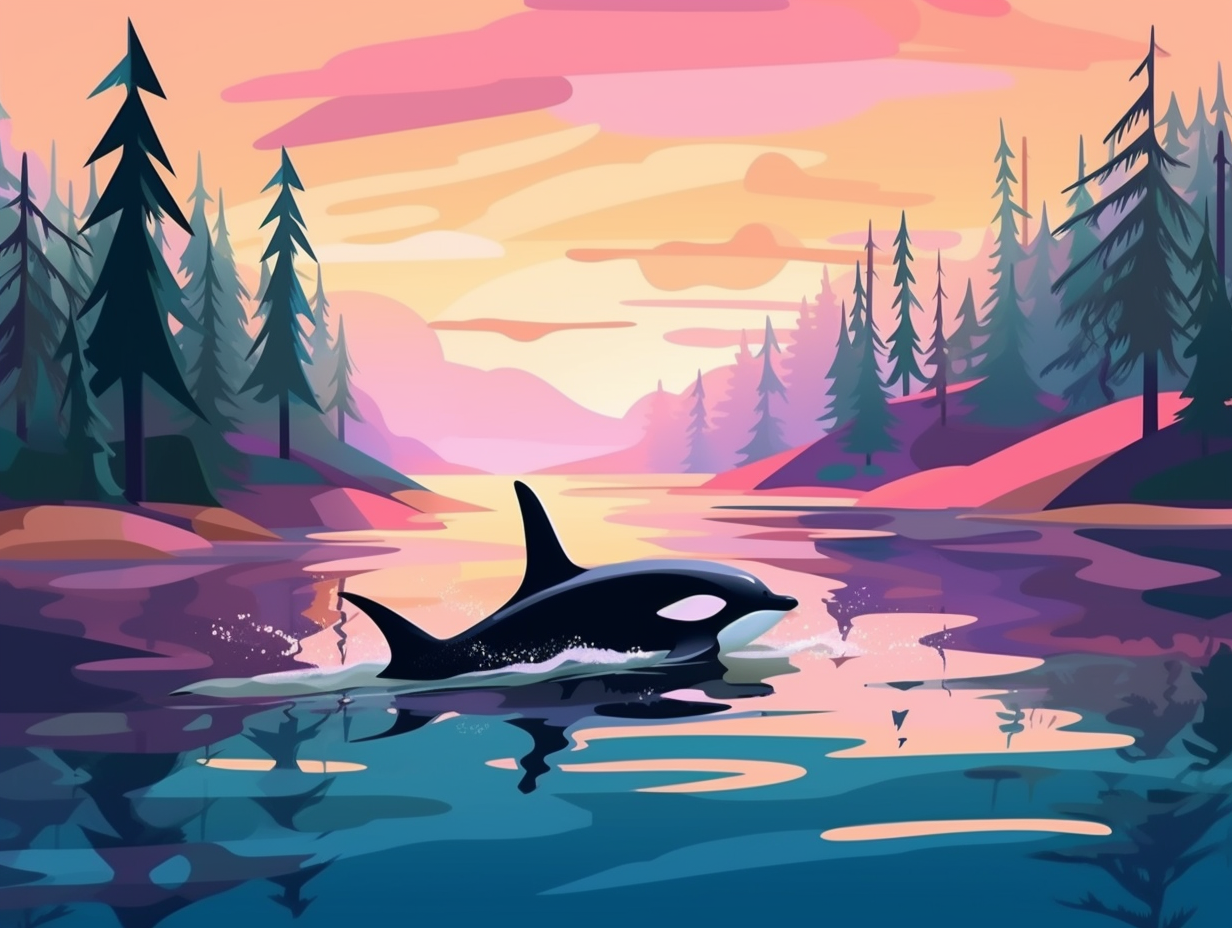
10. Orcas: Chameleons of the Marine World
Who knew orcas were the chameleons of the marine world, constantly swapping cliques like high school students at lunchtime: Orcas have unique ecotypes that rarely mingle with one another, and display distinct differences in size, appearance, prey preferences, foraging techniques, dialects, behaviors, and social groups, making them the most diversified marine mammal species on the planet.
Source => us.whales.org
11. Orcas: International Jet-Setters of the Sea
Get ready for a whale of a time: Orcas have ten different ecotypes, each with unique diets, habitats, languages, and cultures, making them the international jet-setters of the marine world! Seriously: three of these globe-trotting ecotypes chill in the Pacific Northwest alone, giving a whole new meaning to a whale's "dinner party" and cultural exchange.
Source => animalsofpnw.com
12. Orcas' Genius Minds and Generational Knowledge
Orcas are the tech-savvy brainiacs of the sea, famed for their corkscrew craniums and mastering the art of generational knowledge transfer - a skill many human families wish they could emulate during Thanksgiving get-togethers! Seriously though: these killer whales boast a highly complex, folded brain brimming with thick, myelinated neurons, making them one of the most intelligent animals on Earth with an impressive knack for developing and passing down innovative hunting strategies.
Source => pbs.org
13. Orcas: The Biggest Dolphins
You might say orcas like to dolphin-ately keep their family connections on the down-low: In reality, killer whales are not whales at all, but the largest members of the dolphin family, boasting three distinct ecotypes with varying appearances, diets, habitats, genetics, and behaviors.
Source => fisheries.noaa.gov
14. Eye Patches: Orcas' Espionage Tool
Oh, what an eye sore: those orcas have got themselves a mysterious white patch that's part fashion statement, part espionage tool! Undercover as the ocean's natural-born spies, these sleek black-and-white marvels' peculiar "eye patches" aid in visual communication and help them recognize each other's body orientation in low visibility, although their potential impact on unsuspecting prey remains a secret operation.
Source => grizzlybearwatching.com
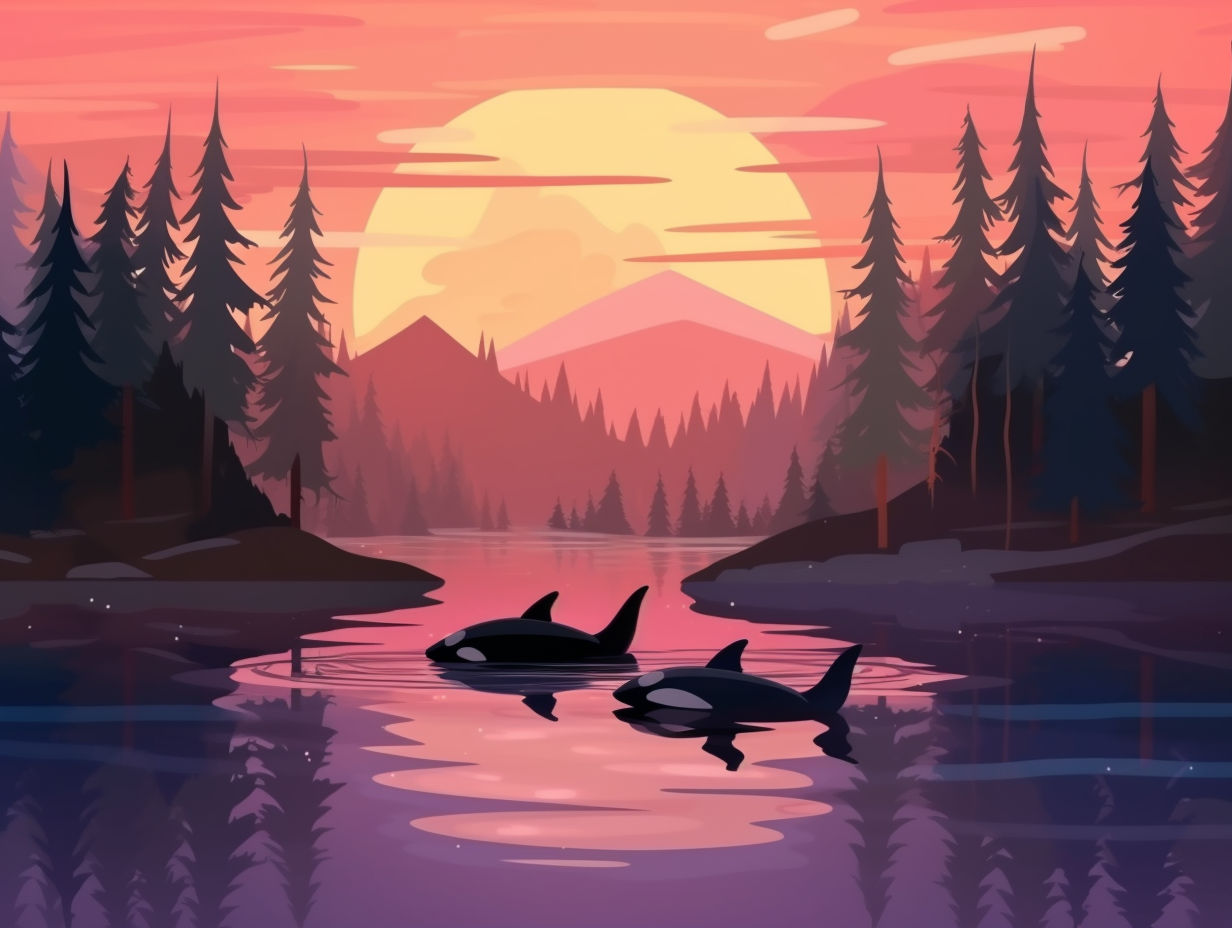
15. Orcas: Synchronized Swimming Champs
If synchronized swimming were an Olympic event for marine mammals, orcas would definitely bring home the gold: These killer whales use vocalizations to coordinate their attacks on prey, often employing a spy-hopping technique to spot potential victims and working together to create sub-surface waves that break up ice floes, sending unsuspecting meals splashing into the water below.
Source => iflscience.com
16. Rosetta Stone: Orcas' Unique Dialects
Move over, Rosetta Stone; the orcas have their own dialects! These majestic black and white marine maestros speak a fin-tastic language filled with pod-tastic accent and a splash of orca-tastic culture: Killer whales, also known as orcas, live in highly social groups called pods, with each pod in the eastern North Pacific boasting unique sets of calls that are culturally transmitted among its members. This shared language not only helps maintain group cohesion but also serves as their family badge, solidifying orcas' status as some of the most intelligent and fascinating marine mammals on Earth.
Source => fisheries.noaa.gov
17. Orcas Mimicking Human Speech
Forget 1-800-collect or parrot translations, orcas have got your long-distance whale-o-grams covered with their linguistic prowess: Orcas can imitate human speech – saying words like "hello" and "bye bye" on the first try – exhibiting their role in developing distinct dialects within their pods and placing them amongst the few in the animal kingdom with the vocal apparatus and brain pathways to mimic sounds, including other orcas and raspberry noises.
Source => theguardian.com
18. Sleepless New Orca Parents
Behold, the sleepless nights of new parents aren't exclusive to humans! Even orca moms have their own version of mommy insomni-splash: Killer whale calves barely sleep during their first few weeks of life, as they constantly swim alongside their mothers in an "echelon formation" to regulate body temperature and stay safe from predators. This means dedicated orca moms also lose out on sleep for the first month of their little one's life!
Source => eaglewingtours.com
19. Whale-Tail Stunner Tactic
What do orcas and a rowdy bar brawl have in common? Both know how to make quite the splash and leave their target utterly stunned! In a fascinating display of undersea thuggery: orcas whack their powerful tails to stun entire schools of herring, making it easy to pick them off one by one, according to a study by Paolo Domenici and colleagues at the International Marine Centre at Torregrande, Italy. However, big victims like seals or sea lions don't make the "whale-tail hit list".
Source => nature.com
20. Orcas: Masters of Dialects and Languages
Step aside, United Nations: for orcas are the true masters of dialects and global languages! These killer whales surely know how to keep their conversations fresh and engaging and outclass any mere polyglot: Each pod of orcas has its very own distinctive set of vocalizations - nearly their own language, showcasing a dazzling myriad of dialects and calls for communication unparalleled in the oceanic realms.
Source => whaleresearch.com
21. Picky Eater Orcas: Talented Fish-Finding Musicians
Who knew that orcas could be such picky eaters and talented fish-finding musicians? Maybe they're just prepping for their underwater version of "The Voice": Southern Resident killer whales rely heavily on consuming Chinook salmon and utilize their echolocation skills to find them, but their hunting abilities can be hindered by noise pollution, posing a threat to this endangered species.
Source => fisheries.noaa.gov
22. Orcas: Endangered Ocean Superstars
Orcas, the ocean's rambunctious teenagers who just happen to be apex predators: their reign of the seas is not absolute. Pollution, habitat degradation, and preying on all the good sushi have put orcas like the Southern Resident orca population on the endangered list, proving that even the marine world's superstars need a little help from their human friends to keep swimming on.
Source => newscientist.com
23. Orcas' Icy Tinder Adventure
If orcas had a Tinder account, their bio might read "adventurous traveler seeking icy fun times": these marine marvels are not only found in every ocean, but have a particular penchant for the frosty Southern Ocean, which includes Antarctica, where they boast the title of third most abundant cetacean. Early 20th century British biologists braving the pack ice of Victoria Land found killer whales to be their daily cetacean companions, crowning them as the most common whales in the Ross Sea.
Source => oceanwide-expeditions.com
24. Stealthy Orca Commandos
They may not have enrolled in Navy SEAL training, but these sneaky orca commandos surely possess the stealth of a special forces operative: Transient orcas in the Pacific Northwest stealthily swim underwater for extended periods, surfacing just for reconnaissance, while hunting in inconspicuous family units and feasting on harbor seals, Dall's porpoises, Steller sea lions, minke whales, and grey whales.
Source => ptmsc.org
25. Orcas: Fingerprint Artists of the Sea
Ahoy, me hearties! The mysterious creature known as the orca is more of a fingerprint artist with a penchant for singular masterpieces than a pirate's favorite sea monster: Each orca boasts a unique saddle patch, a distinct gray or white marking engulfing the dorsal fin, which scientists use to identify these fascinating critters while also observing fin shapes, nicks, notches, and other epidermal quirks to decipher their affiliation with specific pods, matrilines, and their ages.
Source => sanjuanorcas.com
Related Fun Facts






